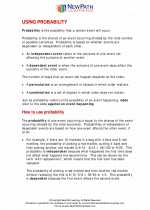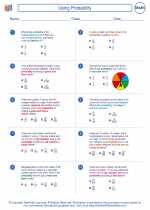Repeat Patterns
A repeat pattern is a sequence of shapes, colors, or objects that is repeated in a predictable way. These patterns can be found in various forms of art, design, and even in mathematics.
Types of Repeat Patterns
There are several types of repeat patterns, including:
- Regular repeat patterns: These patterns have a consistent and predictable repetition of elements, such as stripes, checks, or polka dots.
- Irregular repeat patterns: These patterns involve a more complex and less predictable repetition of elements, often found in nature or in abstract art.
- Geometric repeat patterns: These patterns are based on mathematical shapes and structures, such as tessellations or intricate geometric designs.
Creating and Analyzing Repeat Patterns
To create and analyze repeat patterns, it's important to understand the concept of symmetry, which is the balance and proportion of elements within a pattern. Some key concepts to consider include:
- Translation: Moving a pattern in a specific direction without rotating or reflecting it.
- Rotation: Turning a pattern around a central point, such as a clock hand moving around the face of a clock.
- Reflection: Flipping a pattern over a line to create a mirror image.
Study Guide
Here are some key points to remember when studying repeat patterns:
- Identify the type of repeat pattern (regular, irregular, geometric) and its defining characteristics.
- Understand the concept of symmetry and how it applies to creating and analyzing repeat patterns.
- Practice creating your own repeat patterns using different elements such as shapes, colors, and objects.
- Explore real-world examples of repeat patterns in art, architecture, and nature to gain a deeper appreciation for their prevalence and significance.
By mastering the concept of repeat patterns, you can develop a keen eye for design and a better understanding of the mathematical and artistic principles that underlie them.
.◂Math Worksheets and Study Guides Seventh Grade. Using Probability
Study Guide Using Probability
Using Probability  Worksheet/Answer key
Worksheet/Answer key Using Probability
Using Probability  Worksheet/Answer key
Worksheet/Answer key Using Probability
Using Probability  Worksheet/Answer key
Worksheet/Answer key Using Probability
Using Probability 

 Worksheet/Answer key
Worksheet/Answer key
 Worksheet/Answer key
Worksheet/Answer key
 Worksheet/Answer key
Worksheet/Answer key

The resources above cover the following skills:
Data Analysis and Probability (NCTM)
Understand and apply basic concepts of probability
Compute probabilities for simple compound events, using such methods as organized lists, tree diagrams, and area models.